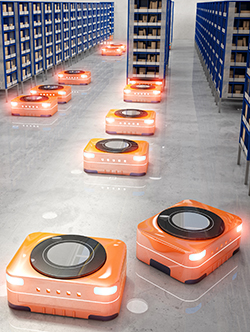Robots, Relationships, and the Real Fix
for America’s Labor Crunch
By: Elad Inbar

Seventeen years ago, when I started RobotLAB, robots were perceived primarily as sci-fi toys or mechanical arms on automotive assembly lines. When we started, the initial offerings were modest, educational robots that taught kids programming, coding, and other STEM subjects, mainly because tabletop robots (essentially connected toys) were the only commercially viable products. Fast forward to today, the landscape has dramatically shifted. Businesses across sectors like restaurants, hotels, warehouses, hospitals, schools, and airports now rely on mobile service robots for tasks ranging from delivering room service to cleaning expansive floors and providing security patrols. The core of automation remains unchanged, but its adoption has accelerated dramatically due to persistent nationwide labor shortages.
Main Street Needs, Enterprise Solutions
Solving the Labor Gap, One Task at a Time
Security is experiencing a similar evolution. Patrol robots now monitor parking lots, warehouses, airports, and malls, especially during late-night shifts when staffing is toughest. Equipped with 360-degree cameras, thermal imaging, and two-way audio, these units deter crime, record incidents, and relay alerts in real time—all while keeping employees out of potentially hazardous situations. The result is a safer environment, better evidence capture, and lower insurance exposure.
Finally, automated cooking and food-prep robots tackle peak-hour chaos in kitchens. By handling repetitive frying, grilling, or sautéing with machine-level consistency, they free culinary teams to focus on menu creativity, plating finesse, and direct guest interaction. Operators see shorter lines, tighter portion control, and a reliable safety net when staffing fluctuates—proof that robotics doesn’t replace chefs; it lets them do their best work.



















